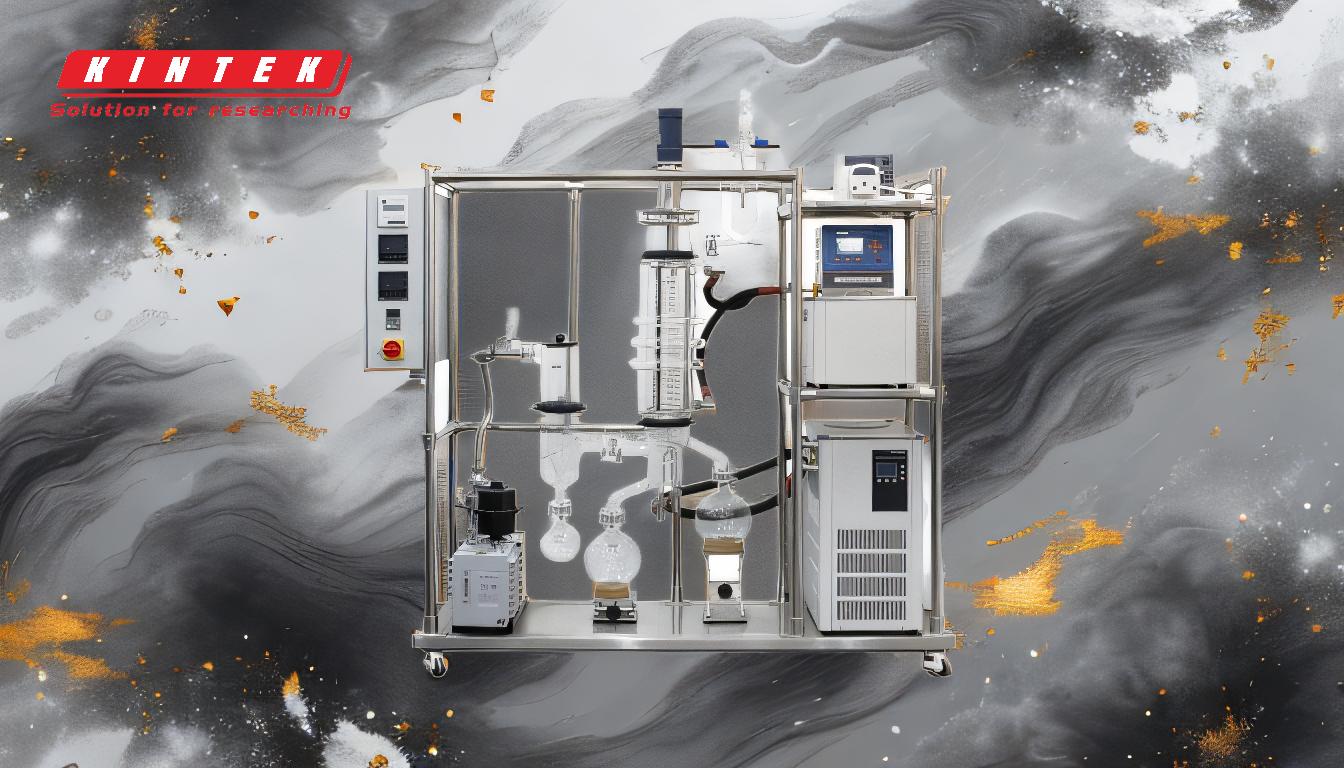Simple distillation is preferred over fractional distillation when the boiling points of the components in a mixture differ significantly, typically by at least 25°C, or when the goal is to separate a highly volatile solvent from a high-boiling material. It is a simpler, faster, and more cost-effective method, making it suitable for less complex separations or when high purity is not required. Fractional distillation, with its fractionating column, is better suited for separating components with similar boiling points, but it is more complex, time-consuming, and expensive. Thus, simple distillation is chosen for straightforward separations where efficiency and cost are prioritized over achieving extremely high purity.
Key Points Explained:

-
Boiling Point Difference:
- Simple distillation is effective when the boiling points of the components in the mixture differ significantly, typically by at least 25°C. This makes it easier to separate the components without the need for additional stages of purification.
- Fractional distillation, on the other hand, is designed for mixtures where the boiling points are closer together, often differing by less than 25°C. The fractionating column in fractional distillation allows for multiple stages of separation, which is necessary for achieving high purity in such cases.
-
Simplicity and Speed:
- Simple distillation is a straightforward process that involves heating the mixture to its boiling point and condensing the vapors. This simplicity makes it faster and easier to perform, especially in laboratory settings or when time is a constraint.
- Fractional distillation, while more effective for complex separations, is more time-consuming due to the additional stages involved in the fractionating column. This can be a disadvantage when quick results are needed.
-
Cost-Effectiveness:
- Simple distillation is generally less expensive than fractional distillation. It requires less equipment and fewer resources, making it a more economical choice for simple separations.
- Fractional distillation, with its specialized equipment like the fractionating column, is more costly. This makes it less suitable for situations where budget constraints are a concern.
-
Purity Requirements:
- Simple distillation is sufficient when high purity is not a critical requirement. It is often used in applications where the primary goal is to separate a volatile solvent from a less volatile residue.
- Fractional distillation is preferred when high purity is essential, such as in the separation of compounds with very close boiling points, like terpenes from THC and CBD in cannabis extraction.
-
Application Scenarios:
- Simple distillation is commonly used in scenarios where the components to be separated have a large boiling point difference, such as separating water from salt or ethanol from water in a simple mixture.
- Fractional distillation is used in more complex scenarios, such as in the petroleum industry for refining crude oil into various fractions like gasoline, diesel, and kerosene, where the components have very similar boiling points.
-
Equipment Complexity:
- Simple distillation requires minimal equipment: a heat source, a distillation flask, a condenser, and a collection vessel. This simplicity makes it easier to set up and operate.
- Fractional distillation requires additional equipment, such as a fractionating column, which can be more complex to set up and maintain. The spinning band column, for example, is a specialized type of fractionating column that enhances separation efficiency but adds to the complexity and cost.
In summary, simple distillation is chosen over fractional distillation when the components to be separated have significantly different boiling points, when simplicity and speed are important, and when cost is a concern. Fractional distillation, with its ability to handle more complex separations and achieve higher purity, is reserved for situations where these factors are outweighed by the need for precise separation of components with similar boiling points.
Summary Table:
| Aspect | Simple Distillation | Fractional Distillation |
|---|---|---|
| Boiling Point Difference | ≥ 25°C | < 25°C |
| Simplicity | Simple setup, faster process | Complex setup, slower process |
| Cost | Less expensive | More expensive |
| Purity | Suitable for lower purity requirements | Achieves high purity |
| Applications | Separating water from salt, ethanol from water | Refining crude oil, separating similar compounds |
| Equipment | Minimal (flask, condenser, heat source) | Requires fractionating column |
Need help choosing the right distillation method for your application? Contact our experts today!










